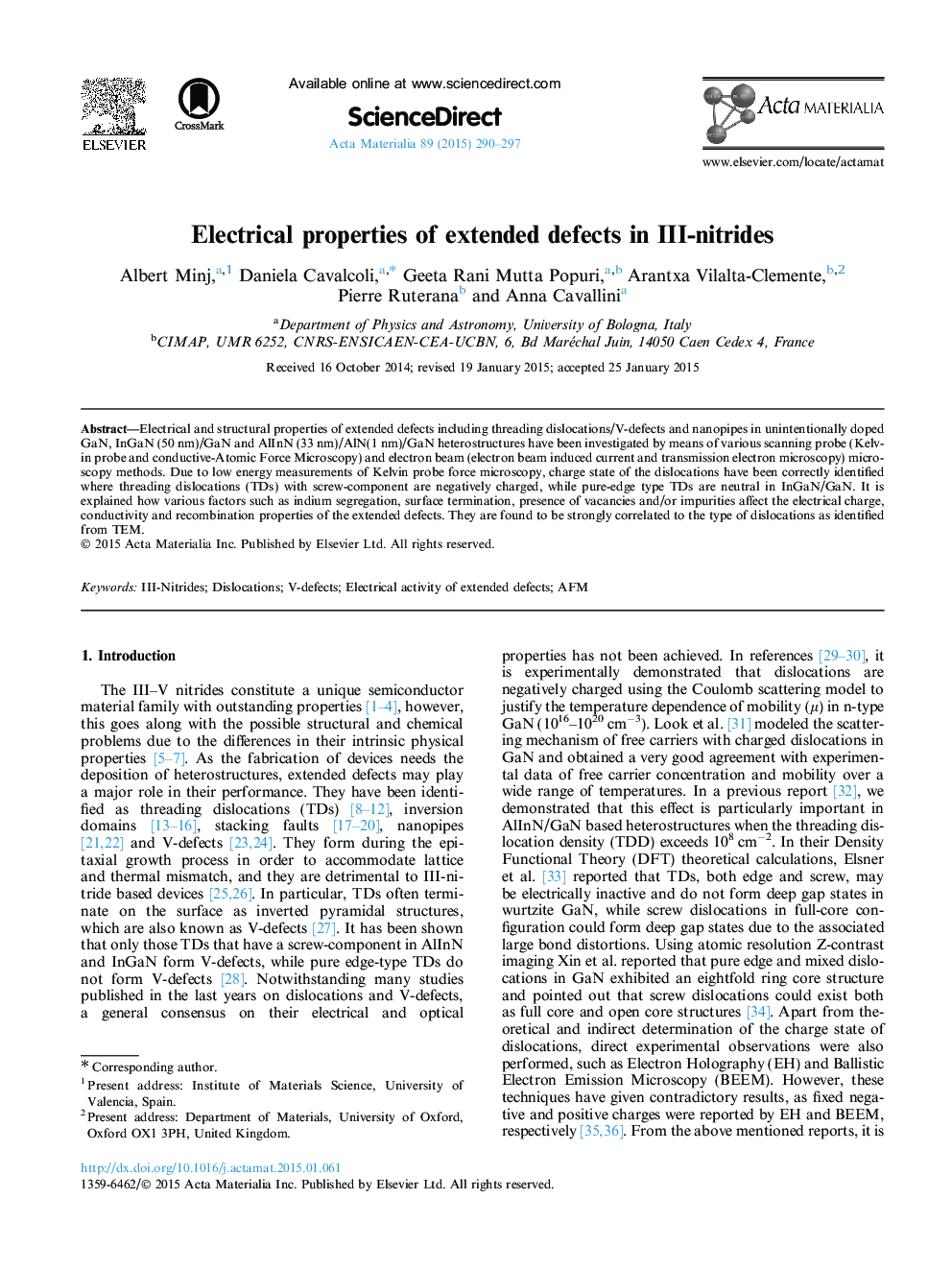| Article ID | Journal | Published Year | Pages | File Type |
|---|---|---|---|---|
| 7880323 | Acta Materialia | 2015 | 8 Pages |
Abstract
Electrical and structural properties of extended defects including threading dislocations/V-defects and nanopipes in unintentionally doped GaN, InGaN (50Â nm)/GaN and AlInN (33Â nm)/AlN(1Â nm)/GaN heterostructures have been investigated by means of various scanning probe (Kelvin probe and conductive-Atomic Force Microscopy) and electron beam (electron beam induced current and transmission electron microscopy) microscopy methods. Due to low energy measurements of Kelvin probe force microscopy, charge state of the dislocations have been correctly identified where threading dislocations (TDs) with screw-component are negatively charged, while pure-edge type TDs are neutral in InGaN/GaN. It is explained how various factors such as indium segregation, surface termination, presence of vacancies and/or impurities affect the electrical charge, conductivity and recombination properties of the extended defects. They are found to be strongly correlated to the type of dislocations as identified from TEM.
Keywords
Related Topics
Physical Sciences and Engineering
Materials Science
Ceramics and Composites
Authors
Albert Minj, Daniela Cavalcoli, Geeta Rani Mutta Popuri, Arantxa Vilalta-Clemente, Pierre Ruterana, Anna Cavallini,
